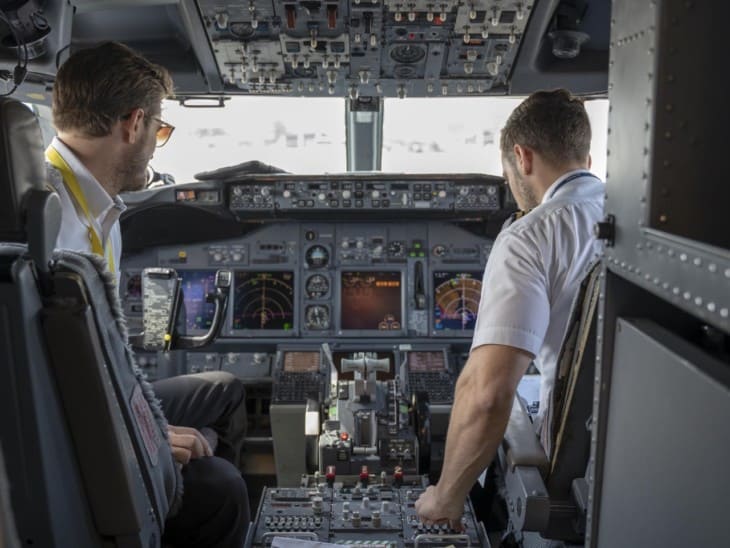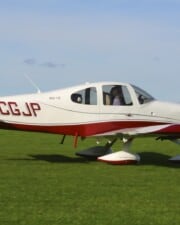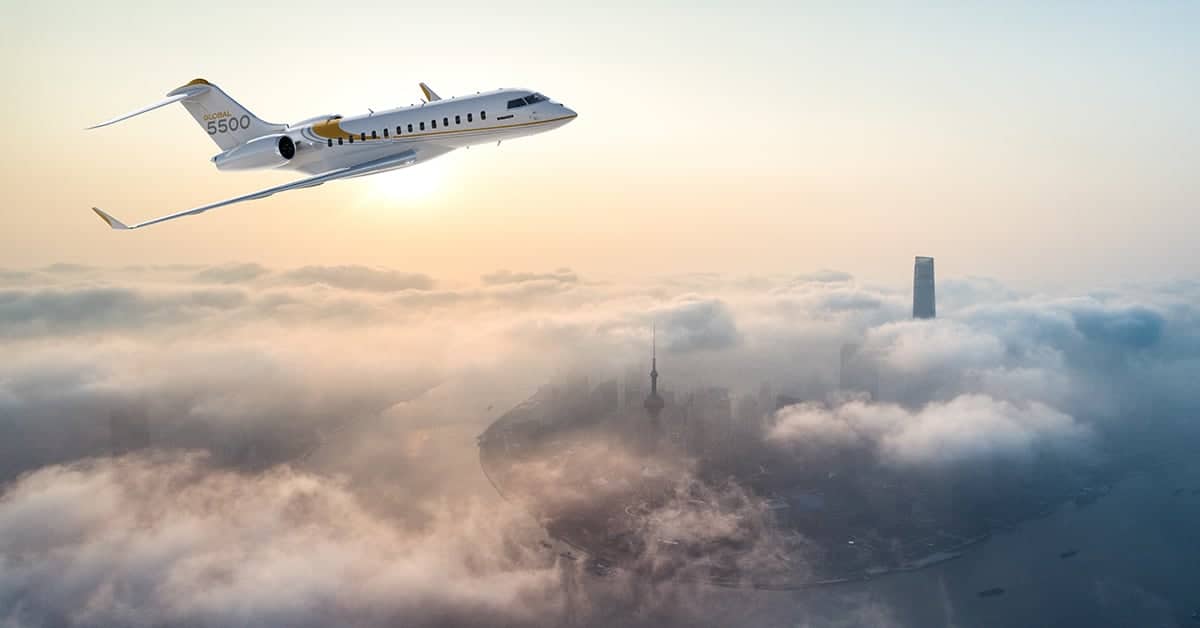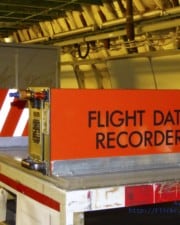Unlike your driver’s license, a pilot’s license is designed to be upgraded throughout your career. Becoming a professional pilot is a long road along which you never stop learning. For most pilots, this means going to school every time they need to learn to fly a new aircraft.
Modern planes are so complex that every make and model requires going to school to master them. So even if you’re a certified Airline Transport Pilot (ATP), you can’t just hop in the left seat of a brand new A350 and fly it. First, you must go to A350 school and pass a practical test. Once you’ve done that, the A350 type rating will appear on your license, and you’re legally allowed to take the controls.
What is a Type Rating?
A type rating is an add-on to your pilot’s certificate that allows you to legally operate an aircraft that requires it. The type rating is specific to that particular make and model of plane, so the material you learn when you get a type rating is mostly aircraft systems and operating procedures and limitations.
Not every aircraft requires a type rating. A pilot certificate is issued based on three things–category, class, and type ratings. You must be licensed in all three of these to fly some planes, while in others, you may only need the right category and class ratings.
Generally, you need a type rating to operate large aircraft or turbojet-powered airplanes. The FAA defines a large aircraft as weighing more than 12,500 pounds.
Related: What is an FAA Type Certificate?
Why Do You Need a Type Rating?
Type ratings are necessary because modern planes are so complex and fast-moving. Turbine aircraft require an enormous amount of training to be operated safely because the crew needs to have the systems and procedures committed to memory.
Type ratings are also necessary to train pilots for any peculiarities involving a particular plane. Any pilot will tell you that flying is much like riding a bicycle–once you know how to do it, you know how to do it forever. But flying is also made up of a lot of automation management. Every plane is equipped with slightly different avionics and autopilot systems.
A pilot cannot fumble around and learn these things as they fly. That might work in a Cessna (although it’s a terrible idea). In a turbine aircraft, things move too quickly during a normal flight to allow the pilot time to search for the right button or get lost in the menus of the FMS (Flight Management System). If things go poorly and an emergency is encountered, searching for things might lead to disaster.
The type rating provides training and hands-on experience for the pilot with the exact aircraft they’ll be flying. First, there’s a ground school component, so you have to learn the plane and its systems inside and out. Then there’s a flying component, usually done in a full-motion simulator, with training in all normal, abnormal, and emergency procedures. In the end, the type rating is issued after the pilot successfully passes their checkride.

What Aircraft Require a Type Rating?
The general rule of thumb is that all large aircraft (over 12,500 pounds) and all turbine aircraft require type ratings if you act as pilot-in-command (PIC). This is the type rating FAA requirements. In addition, ICAO rules require a type rating for any aircraft that needs two or more pilots.
It’s also notable that there are other requirements beyond what the FAA or your government authority may dictate. Insurance companies may make you get “type-specific” training before you can operate any new plane as PIC. An airline will always make new hires get checked out on the company’s procedures and equipment before they can fly the line as part of their Part 121 or 135 standards.
Some planes are designed similarly enough that one type rating will cover several models. For example, when Boeing designed the 757 and 767 airliners, they focused on making the two planes similar. That way, an airline could train their crews with one type rating to save costs and make crew scheduling easier–even though one plane is a medium-haul narrow-body and the other is a long-haul wide-body. This is called a common type rating.
A few other common type ratings include the following.
- Boeing 757 and 767
- Boeing 777 and 787
- Airbus A318, A319, A320, and A321
- Airbus A330 and A340
What is the Difference Between Class Rating and Type Rating?
A pilot certificate can be issued with three ratings–category, class, and type.
Category ratings are broad sets of aircraft like airplanes, rotorcraft, or airships.
Classes are more specific kinds of aircraft within that set. For example, there are four possible classes in the airplane category–single-engine land, single-engine sea, multiengine land, and multiengine sea. Likewise, the rotorcraft category has two possible classes–helicopter or gyrocopter.
Type ratings are specific to the make and model of plane. An example of a type rating on a pilot certificate would be B737 (Boeing 737) or A318/319/320/321 (Airbus A320 family). Most pilots do not have a type rating, since many smaller planes can be operated without them.
How Many Type Ratings Can a Pilot Have?
There’s no limit on the number of type ratings a pilot can have. Most senior pilots have ratings on their certificate for which they are no longer current and cannot legally fly without refresher training.
A pilot will complete type school upon getting hired for a new position in most cases. That might be with a new company, or after they’ve upgraded to different equipment.
As a pilot’s career progresses, they will likely get and use a type rating for a few years before moving on to another. Some pilots fly the same equipment for their entire careers, while others make many changes. So the number of type ratings a pilot collects is a snapshot into what their flying career has entailed.
The Guinness world record holder for the pilot with the most type ratings is Robert Briggs. He’s a former FedEx pilot with over 19,000 hours of flight time in his logbooks and a staggering 109 different type ratings on his certificate.
What is Required to Get a Type Rating
The prerequisites for getting a type rating are not extensive. In many cases, you can combine checkrides to get you qualified in the aircraft. Many commercial pilots complete their ATP checkride the day they complete their first type rating checkride.
On the same note, type rating training is usually used to satisfy any other training requirements a pilot may have. For example, a pilot will often get their high-performance and high-altitude endorsements with their first type rating.
Example Type Rating Curriculum
The FAA’s Advisory Circular 61-89E has a sample curriculum showing a typical type rating course. Here are the topics listed.
- General Operations, like limitations, weight and balance, minimum equipment lists, etc.
- Airplane Systems, like fuel, oil, power plant, electrical, hydraulic, pneumatic, environmental, flight controls and instruments, etc.
- Aircraft-Specific Emergency Training, like emergency equipment and procedures
- Systems Integration Training, like cockpit familiarization, checklists, flight operations and maneuvers, normal and abnormal flight operations, crew resource management, etc
- Flight Instruction, like basic maneuvers, proficiency training, emergency procedures training, and night flying
Type Rating Requirements
Each country has slightly different rules about what planes require a type rating and what a type rating constitutes. The need for a type rating is spelled out in type rating FAR 61.31, which states that a type rating is required for large aircraft, turbojet powered airplanes, or other planes specified by the Administrator.

Type Rating Cost
The cost of a type rating program depends greatly on the type of plane and the type of training. The typical type rating cost in the USA is usually between $10,000 and $30,000. Remember, we’re talking about high-value, high-performance aircraft. These programs always use certified full-motion simulators instead of actual aircraft time, which still costs thousands of dollars an hour to operate.
The number one company providing type ratings is Flight Safety International. Flight Safety has training centers worldwide and trains pilots for flying many types, from Bell Helicopters to Boeing and Airbus airliners.
As a general rule of thumb, pilots don’t pay for their type ratings. The normal path for a professional pilot is to build their hours flying smaller planes as a flight instructor or charter pilot. Then, when they have enough hours to land a better gig, they apply for copilot positions in bigger equipment.
The airline will foot the bill and pay for the pilot’s type rating upon being hired. Occasionally, the airline might want a commitment in return. For example, they may ask that the pilot repay the cost of training if they leave the company in the first year or two of employment.
Some pilots want to jump the gun and get their first type rating on their own. It’s expensive, but then so is everything in flight training. It is very hard to say what type rating you should get. Which type rating will make you more employable? Even if you have the type rating, the company will still want to train you and check you out on their procedures. So having a type rating does not make getting the job a sure thing.
Related Posts














